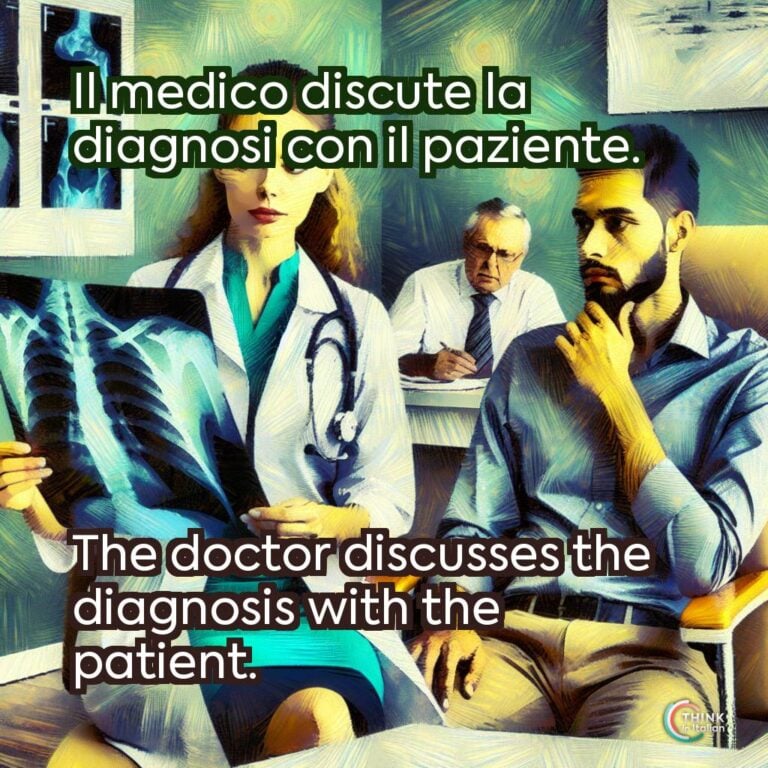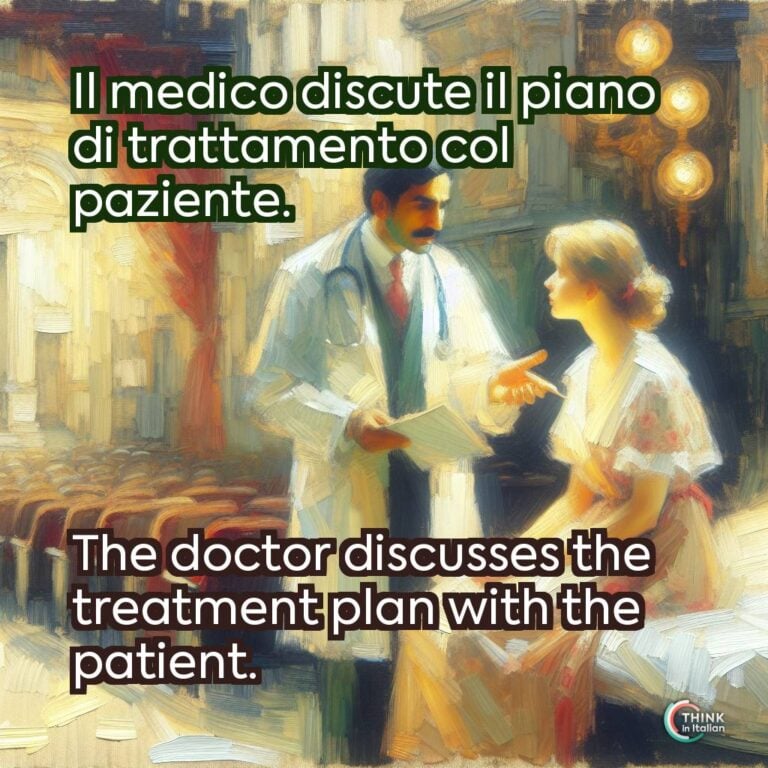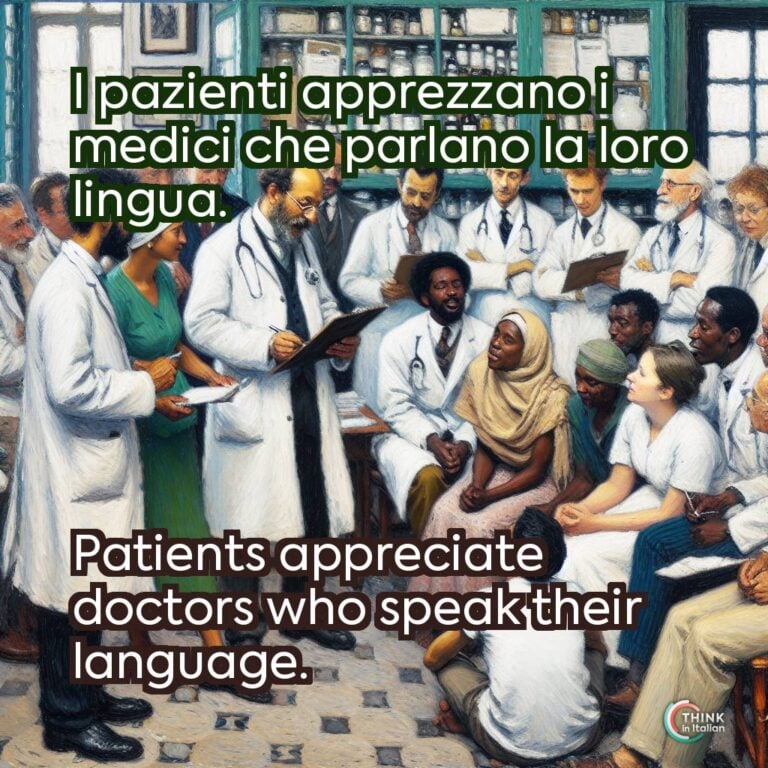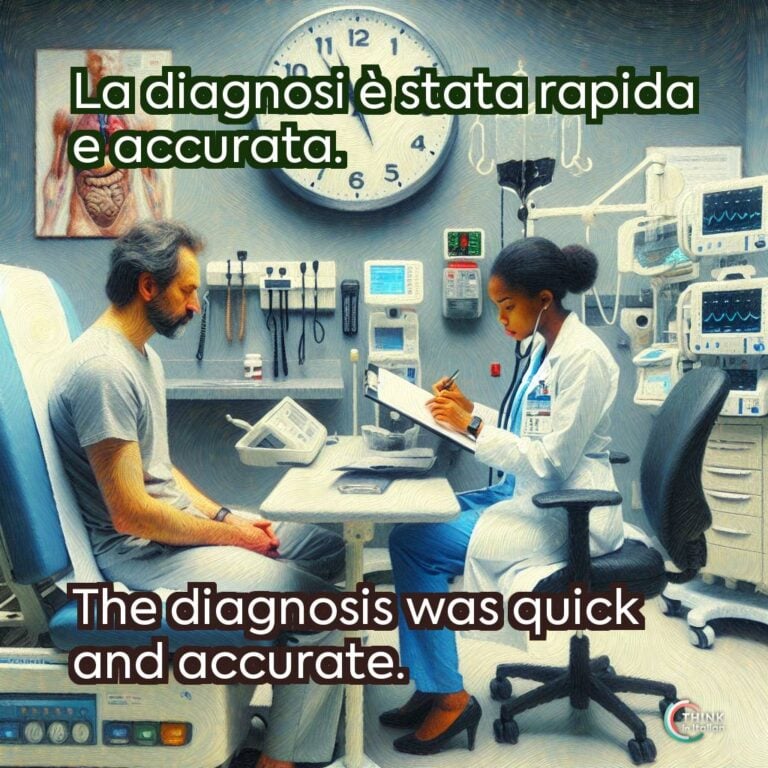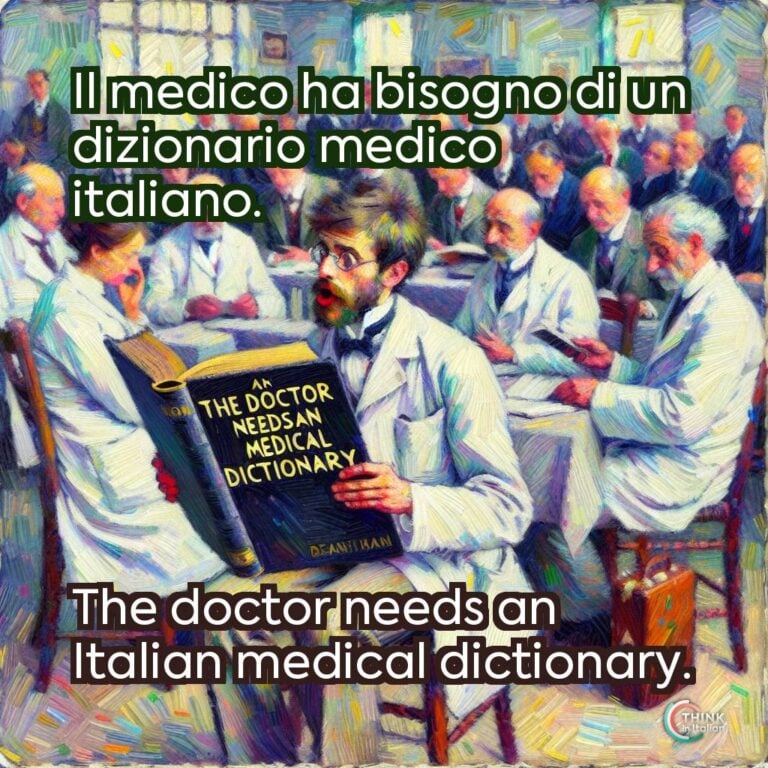Italian Lessons to Enhance Patient Care and Cross-Cultural Collaborations
As a linguist, I have always been fascinated by the powerful role language plays in shaping human interactions, especially in fields where precision, empathy, and cultural competence are crucial, like medicine.
One of the key aspects of Italian courses tailored specifically for doctors revolves around Italian medical vocabulary, of course, as this can directly impact patient care and foster cross-cultural collaborations.
Through a structured focus on Italian medical terminology and cultural nuances, these courses present an opportunity to elevate the standard of care by filling in possible communication gaps and enhancing the quality of patient-doctor relationships.
The Crucial Role of Linguistics in Healthcare
Cultural Competence
One of the most significant benefits of language learning for medical professionals goes beyond mere vocabulary acquisition: it encompasses cultural competence.
From a linguistic point of view, understanding a language also means understanding the culture and context in which it operates. In healthcare, this cultural competence becomes a critical tool for effective communication.
Italian lessons for doctors don’t just teach them how to say medical terms in another language, but they immerse them in the cultural narratives, values, and social norms that inform patient perspectives.
Research shows that patients are more likely to trust and adhere to treatment plans when they feel understood and respected. Therefore, doctors who understand their patients can better navigate conversations about sensitive topics.
Cognitive Benefits of Language Learning
From a cognitive linguistics perspective, learning a new language offers far-reaching benefits that extend into professional performance.
It is well-documented that multilingualism enhances cognitive development, which include abilities that are crucial for doctors who operate in high-pressure environments.
Recent studies in psycholinguistics suggest that multilingual individuals can switch between tasks more efficiently and retain complex information better than monolinguals.
For doctors, this cognitive flexibility could translate into better patient management, faster adaptation to new information, and more accurate decision-making in clinical settings.
The implications of these cognitive benefits in medicine are profound and deserve more attention in discussions about language learning for healthcare professionals.
Expanding Professional Horizons Through Language
It is obvious that the main benefit of learning Italian for doctors is improving communication with Italian-speaking patients. However, there are broader professional advantages that should not be overlooked.
In an increasingly globalized world, doctors who are proficient in multiple languages can participate in international research collaborations, present at conferences, and engage with a wider community of medical professionals.
I might be biased, but language skills are a valuable asset not just for patient care but also for career development. By learning Italian, doctors are not only better equipped to treat individual patients but also positioned to contribute more meaningfully to the global healthcare landscape.
Improvement of Patient-Doctor Relationships
The long-term benefits of doctors learning Italian are most visible in the strengthened patient-doctor relationships that result from language concordance.
As an Italian living abroad, I am myself one of those that feels a deep sense of comfort and trust when treated by doctors who speak my language.
This trust is not only an emotional asset but a practical one because it can significantly impact health outcomes by improving patient compliance and reducing errors related to miscommunication.
Challenges of Medical Language Learning
The cognitive load of mastering specialized terminology is something we should take into account. However, these challenges can be mitigated by designing courses that are flexible, practical, and tailored to the unique needs of medical practitioners.
My best tips to learn Italian fast are always the same:
- Continuous exposure to the language through podcasts, language exchange partners, and dedicated medical language apps.
- Integrate language learning into daily routines of doctors in a way that feels relevant.
- Incorporate Technology and AI
Regarding the incorporation of technology, I believe that AI-driven tools are perfect to provide personalized learning experiences, adaptive feedback, and even real-time simulations that mimic patient interactions.
For example, a virtual patient powered by AI could respond to a doctor’s questions in real-time, providing a dynamic and realistic practice environment.
As a linguist, I find these technological advancements particularly promising. They represent a shift from static, textbook-based learning to interactive, experiential education that aligns closely with how language is used in real life.
How to Learn Medical Italian
Tips for Doctors
As a linguist, I am aware that not all language learning modalities are equally effective, especially for professionals with specific needs like doctors.
The most impactful learning for doctors comes from methods that simulate real-life scenarios, like immersive patient dialogues or case-based learning modules.
These methods not only help in retaining vocabulary but also in practicing the kind of quick, context-sensitive decision-making that medical professionals require.
Something that I personally feel like advising is to work on one’s accent to develop better pronunciation skills. Although research has shown that hard accents do not affect comprehension and intelligibility, foreign accents do influence the way speakers are perceived.
A well-managed accent in medical communication can foster trust and improve the overall patient-doctor relationship.
Tips for Healthcare Institutions
To fully harness the benefits of language learning, healthcare systems themselves should offer structured language training programs, integrating cultural competence into medical curricula, and encouraging language proficiency as a marker of professional development.
Interestingly, there are already successful models in place where hospitals have implemented language programs with positive results.
Healthcare institutions should consider partnerships with language education providers or develop their own in-house training programs to support doctors in acquiring these critical skills.
Such initiatives not only benefit individual doctors but also align with broader goals of providing equitable, high-quality care in multicultural settings.

